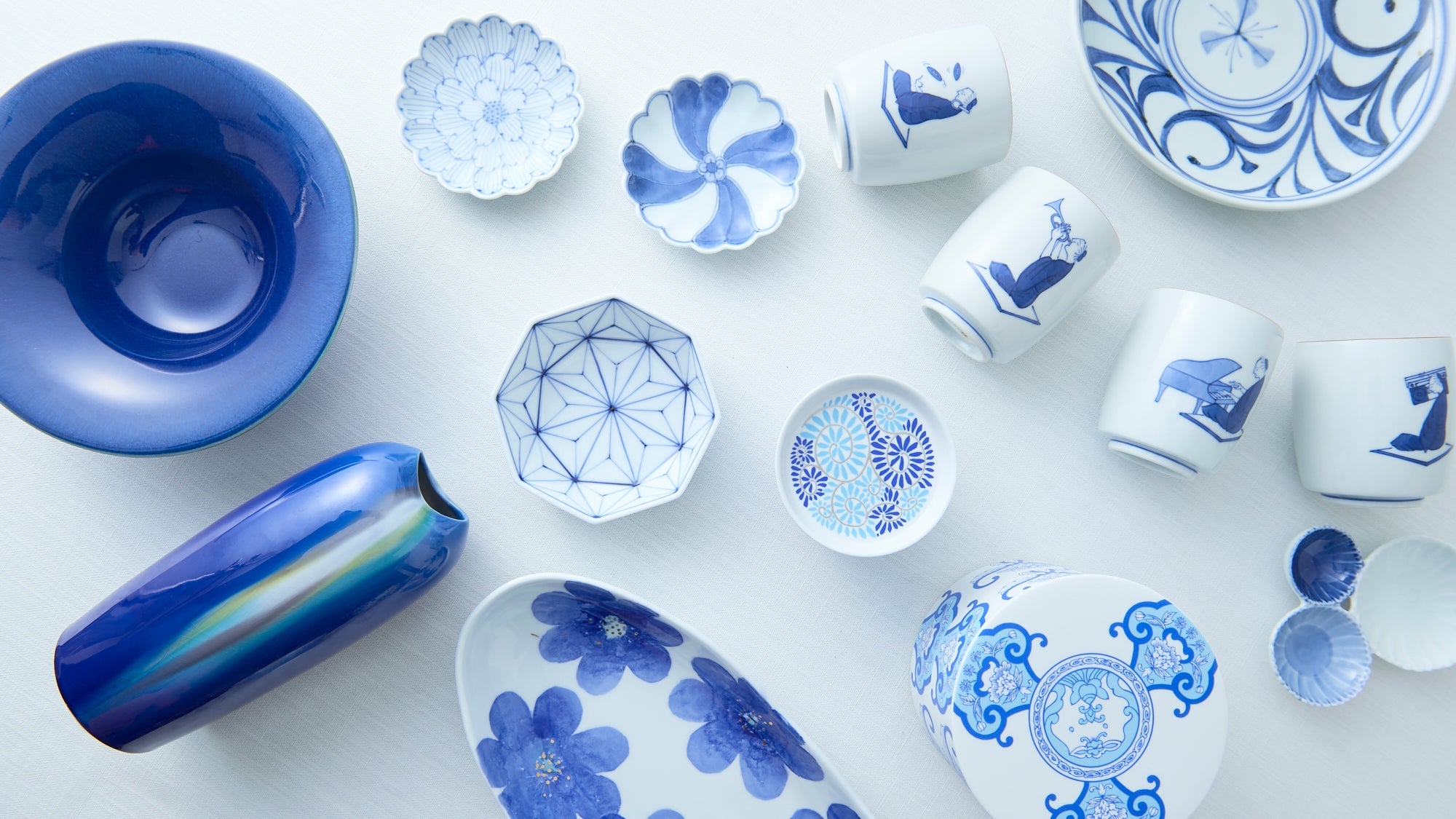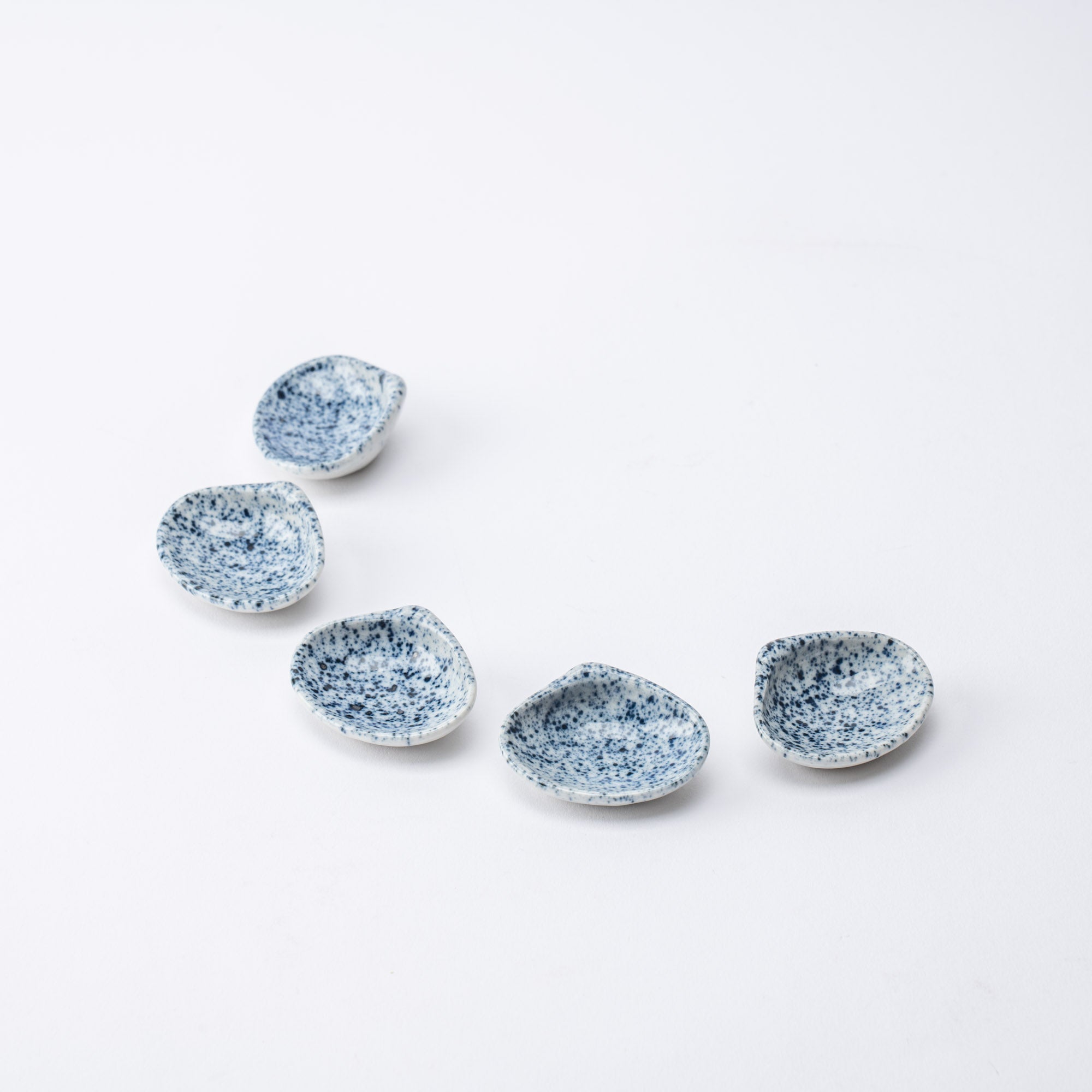
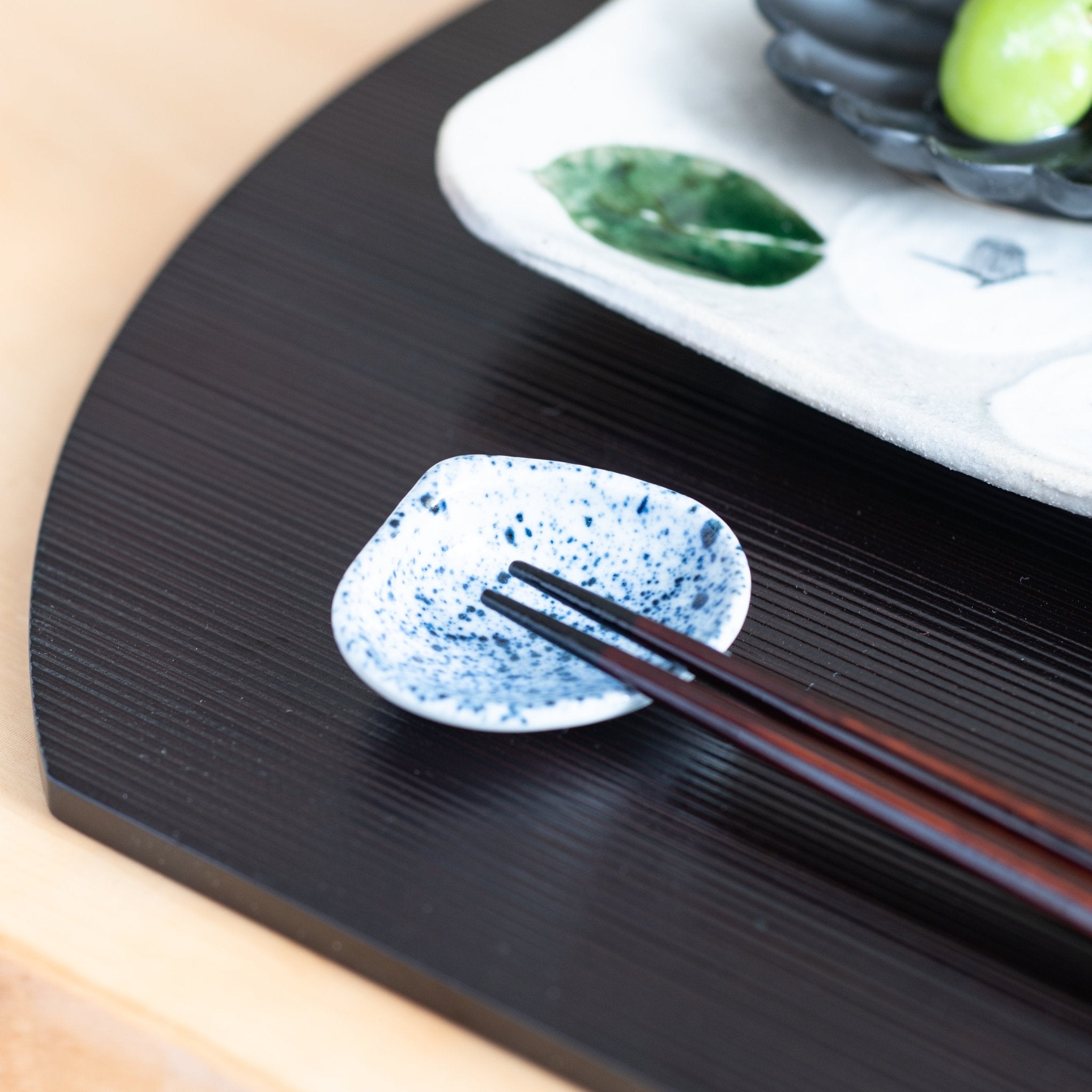
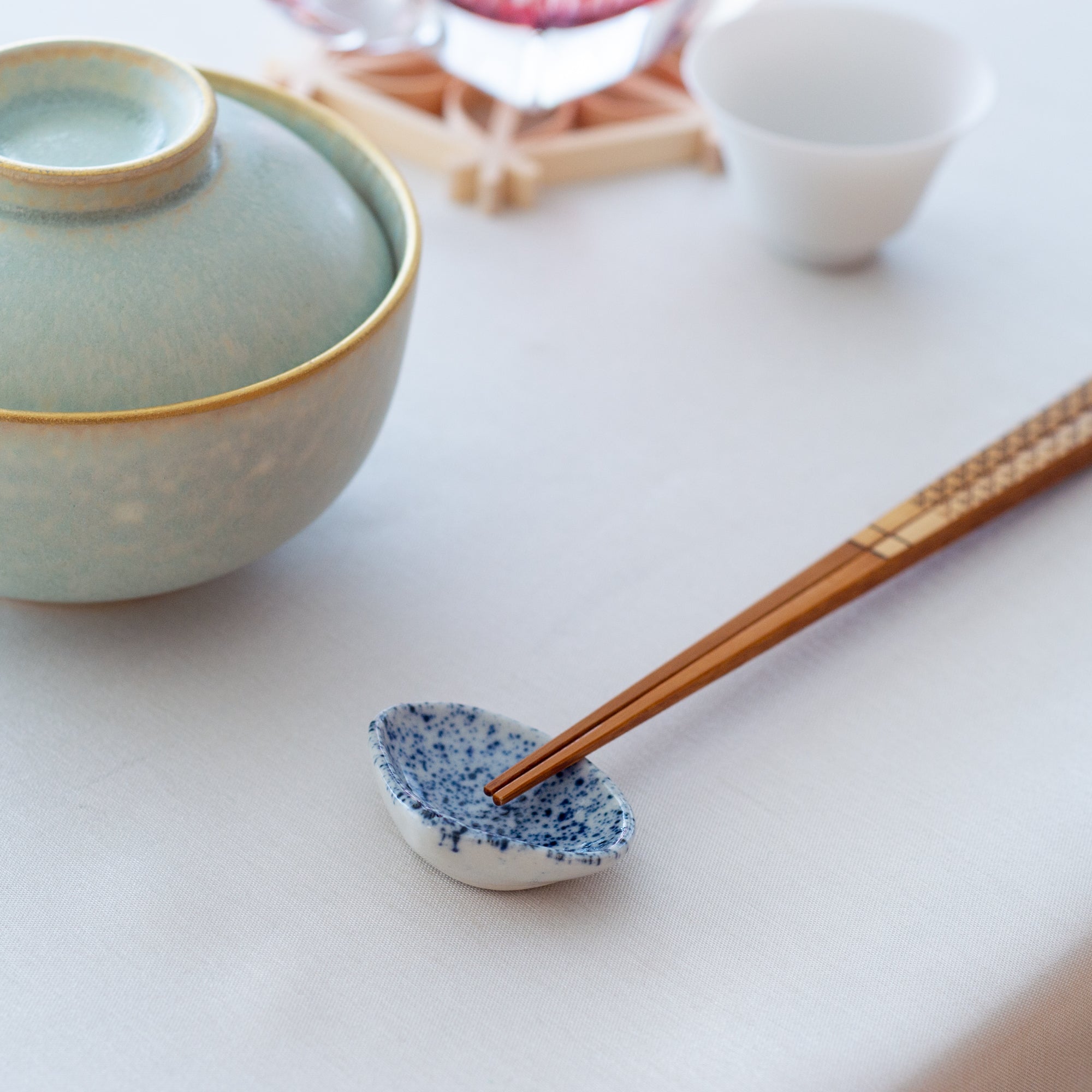
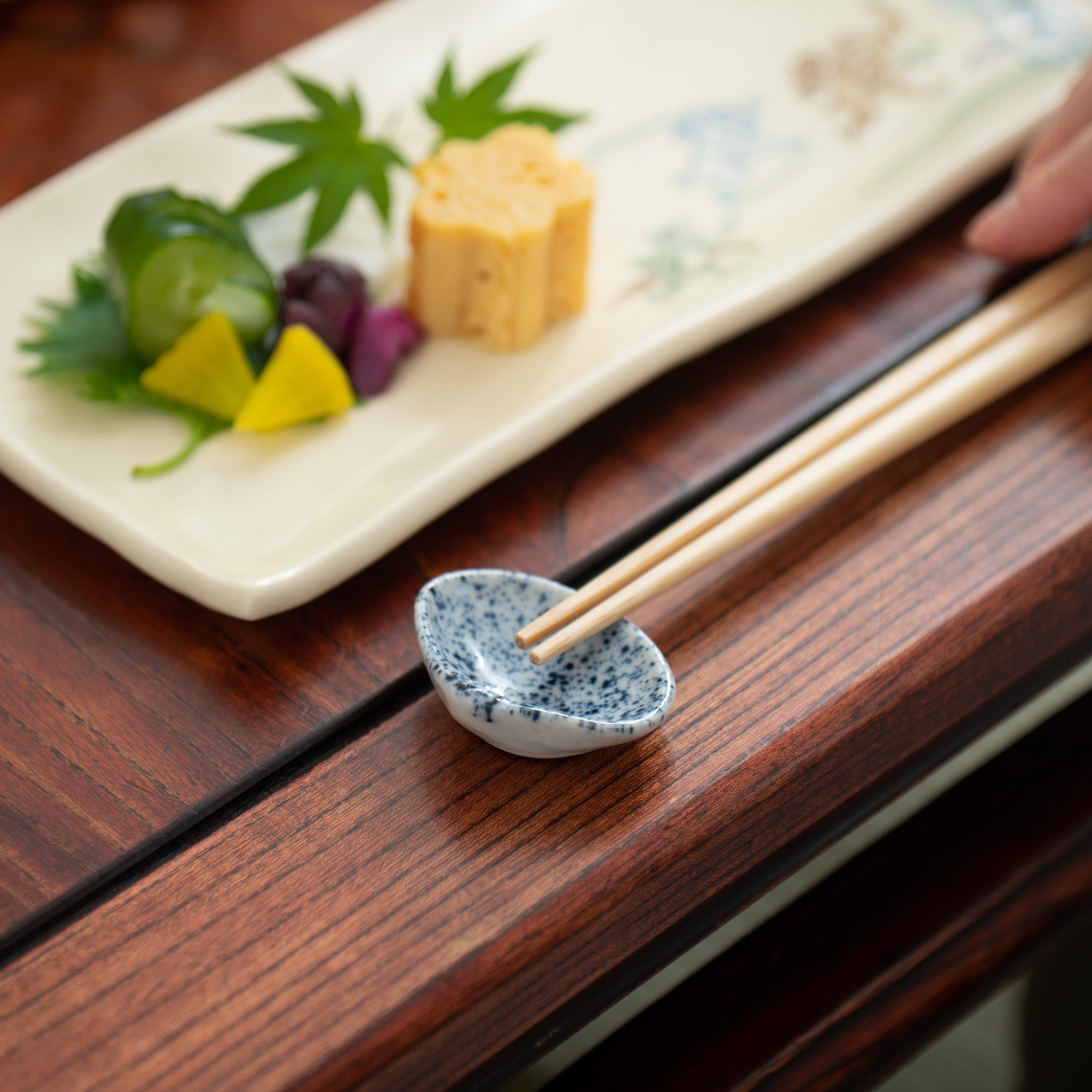
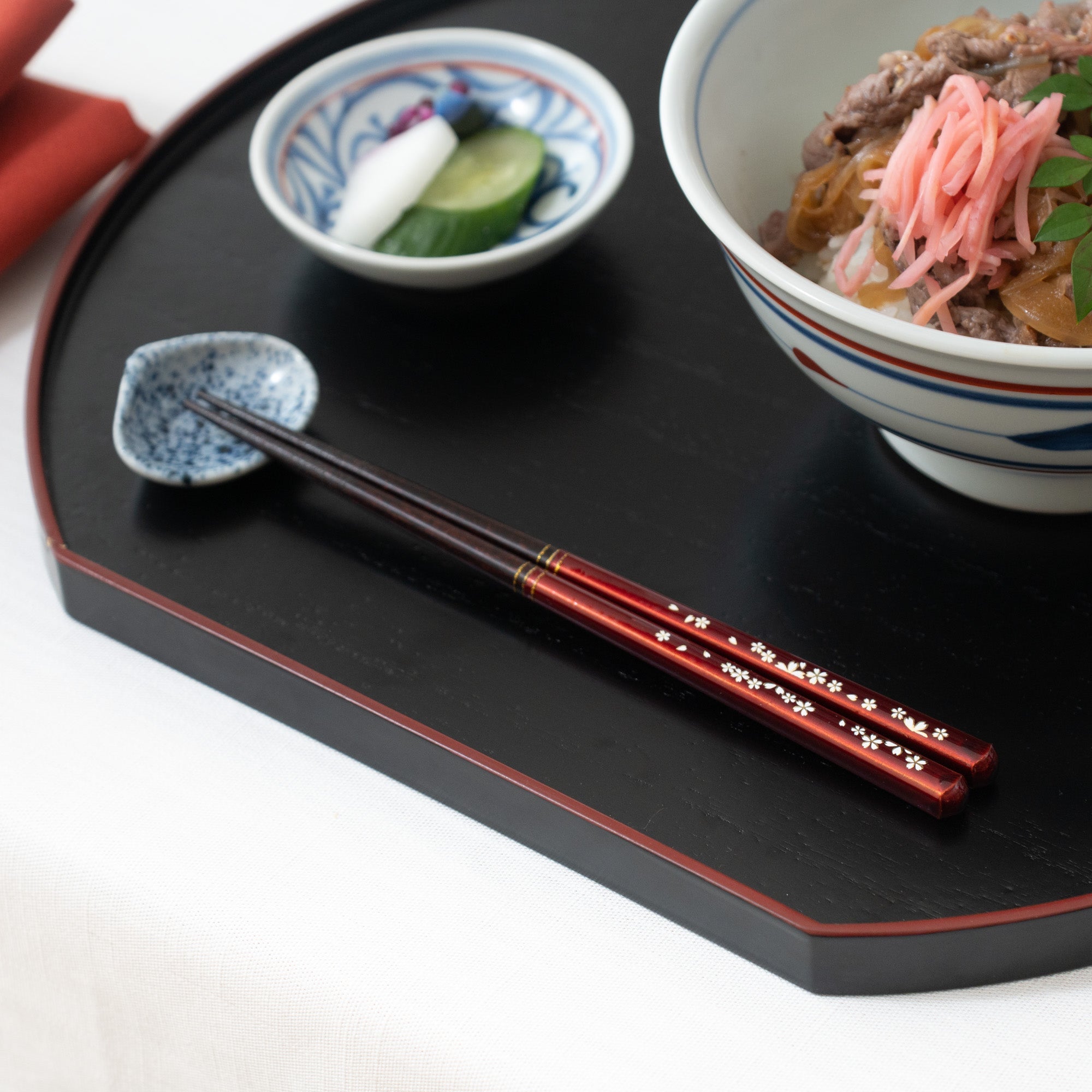
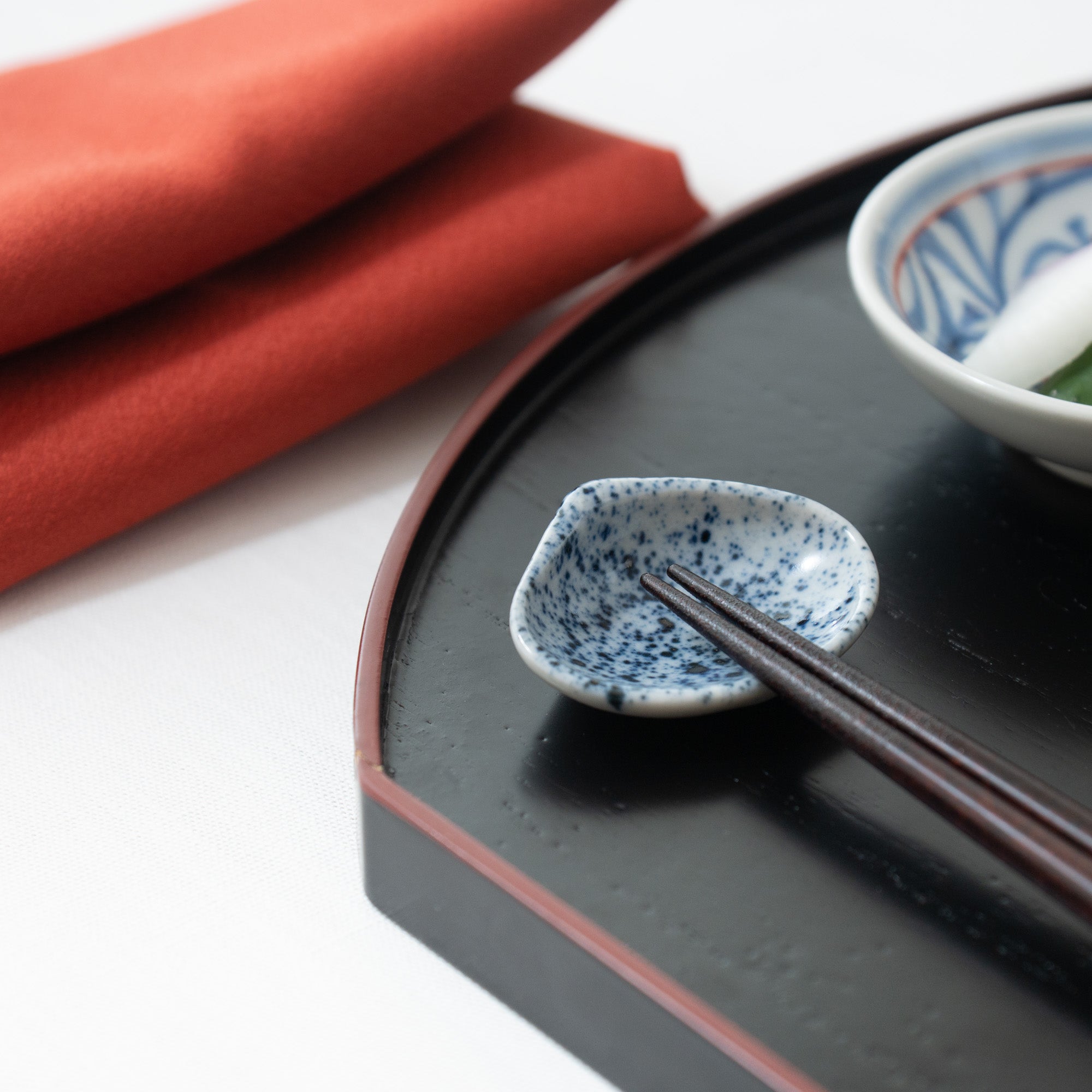
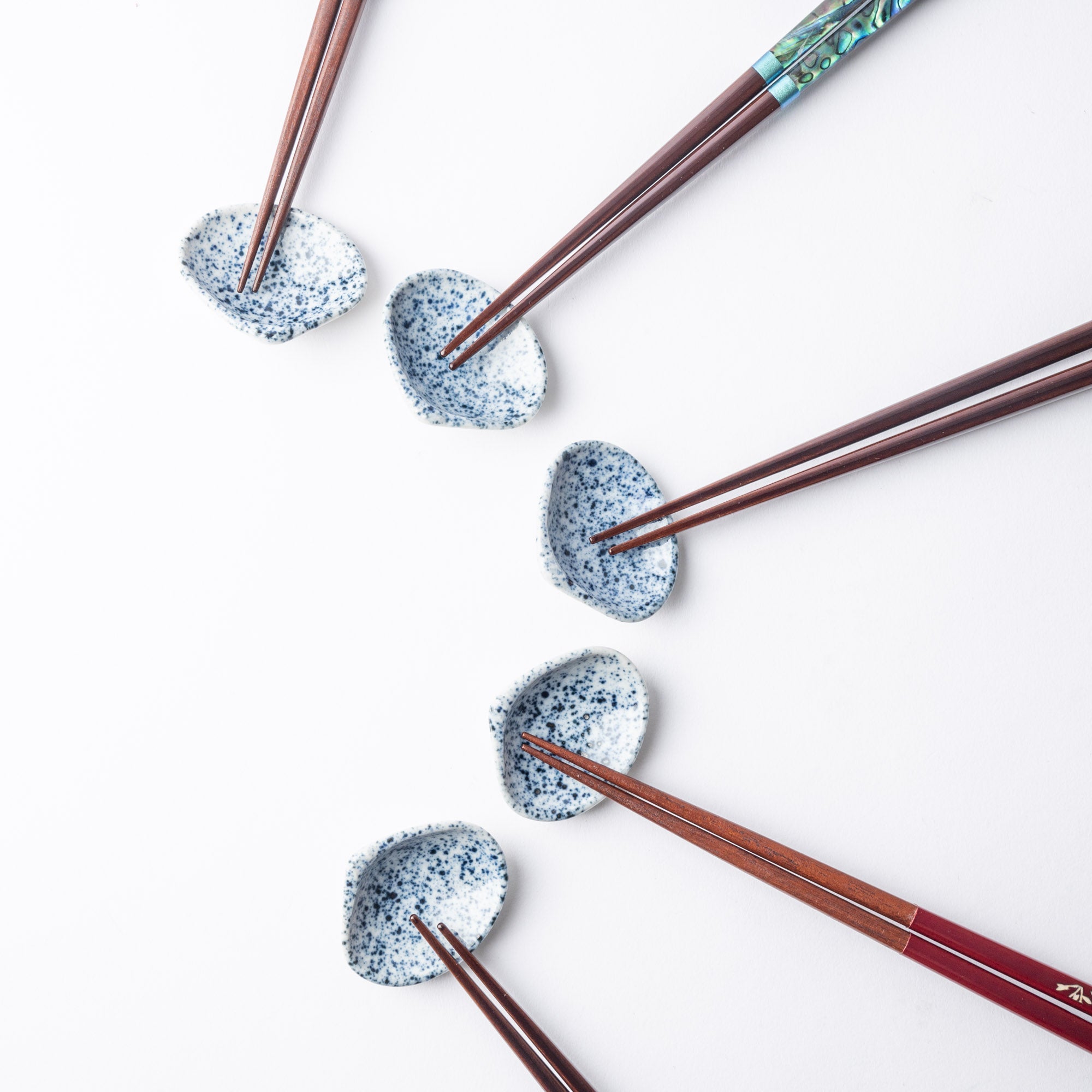
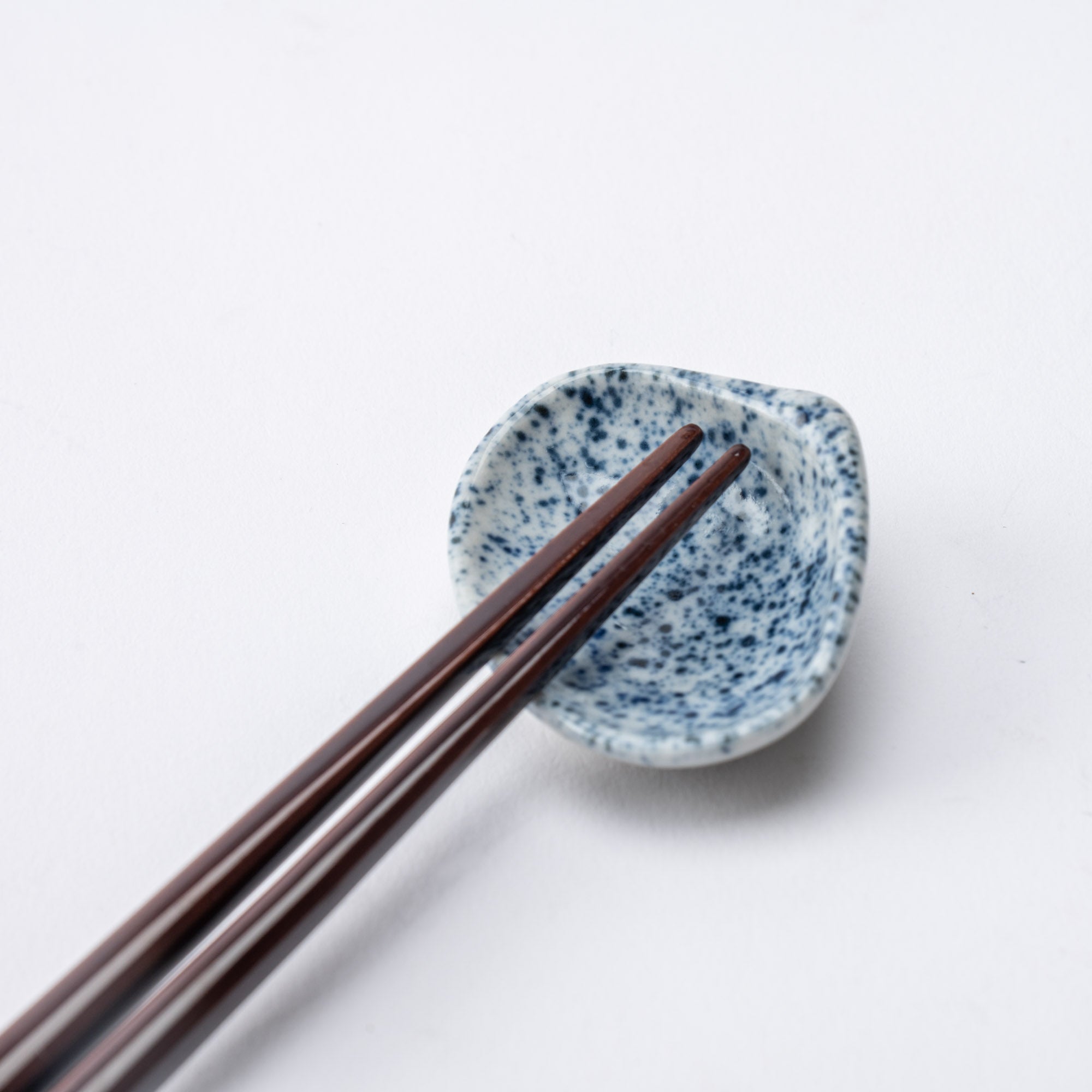
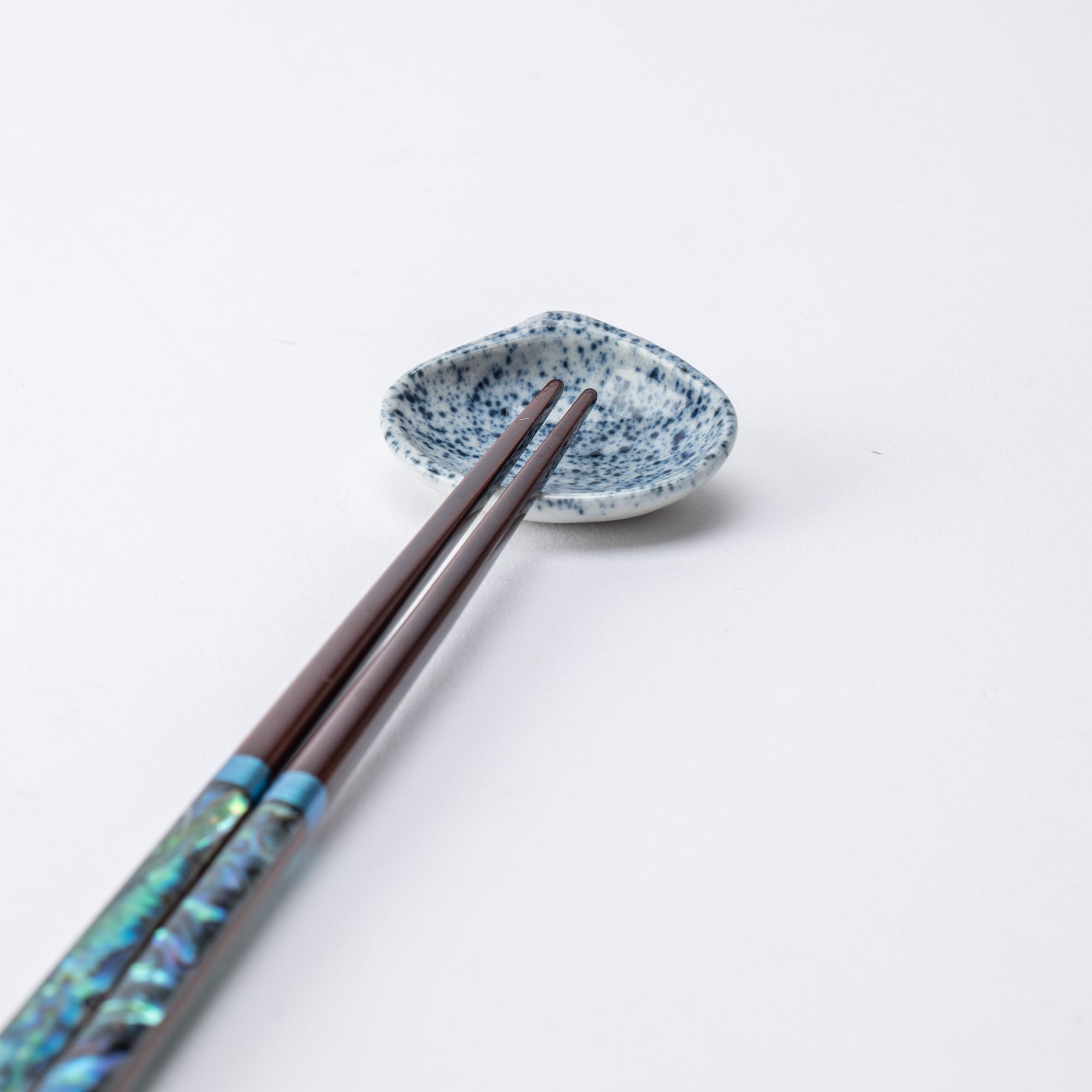
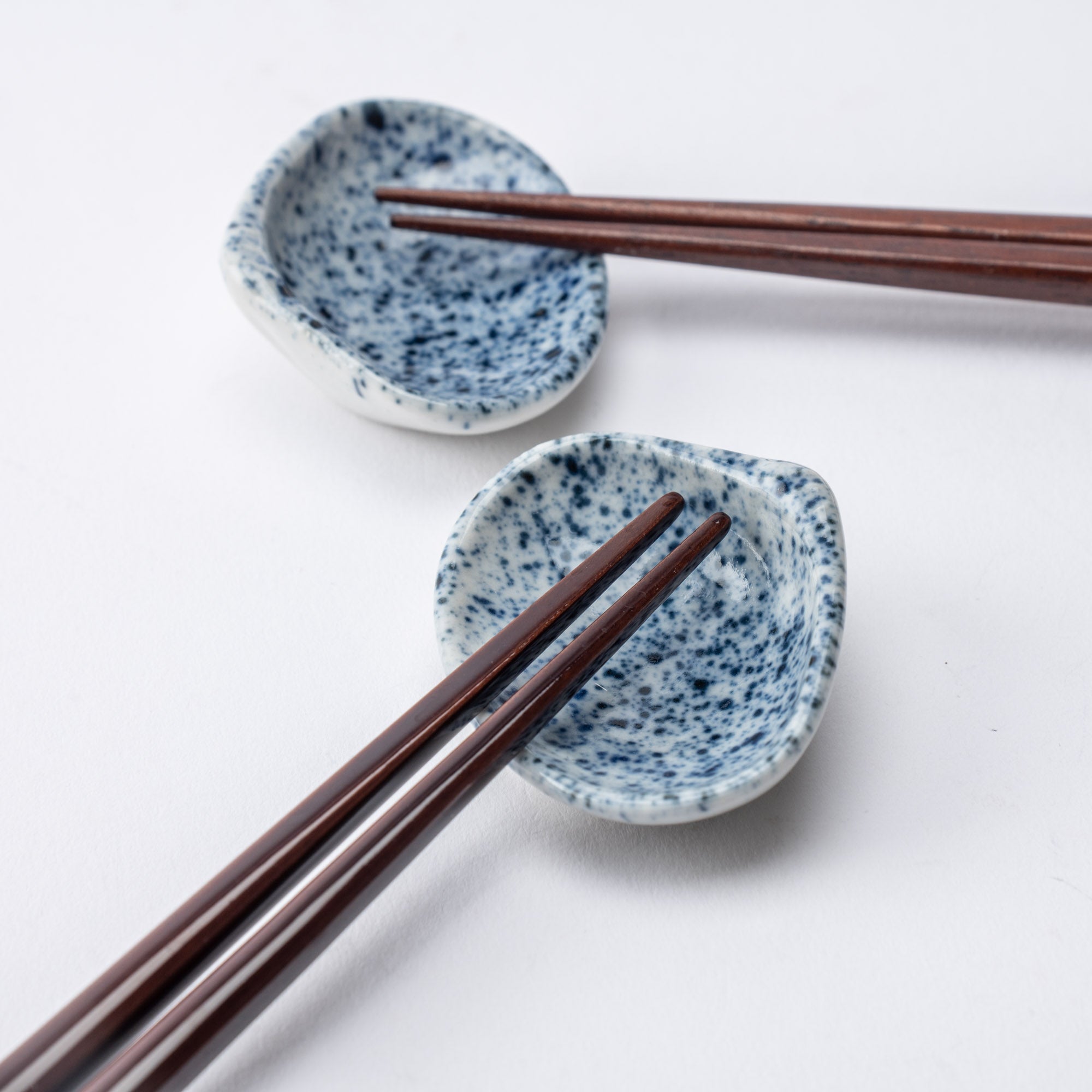

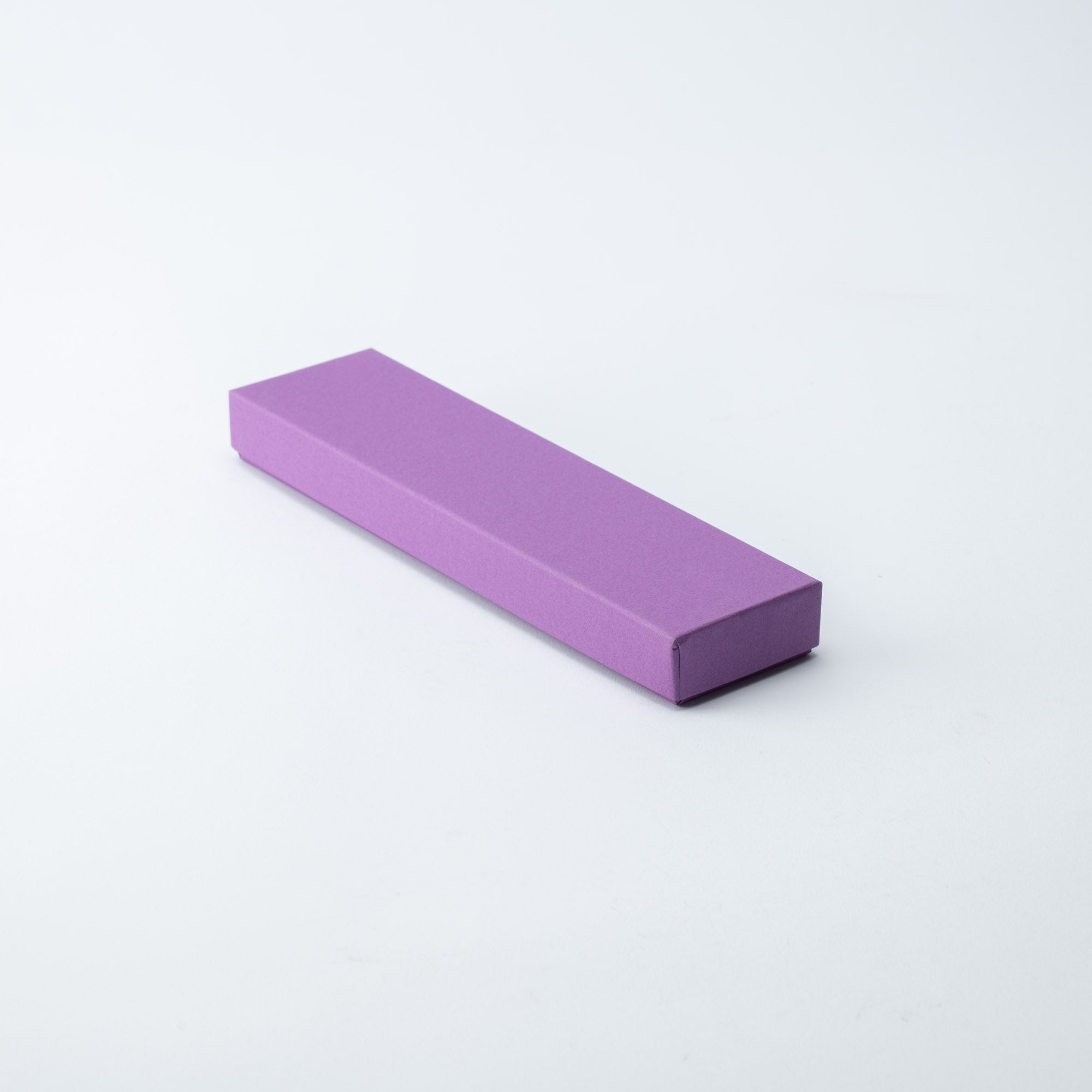
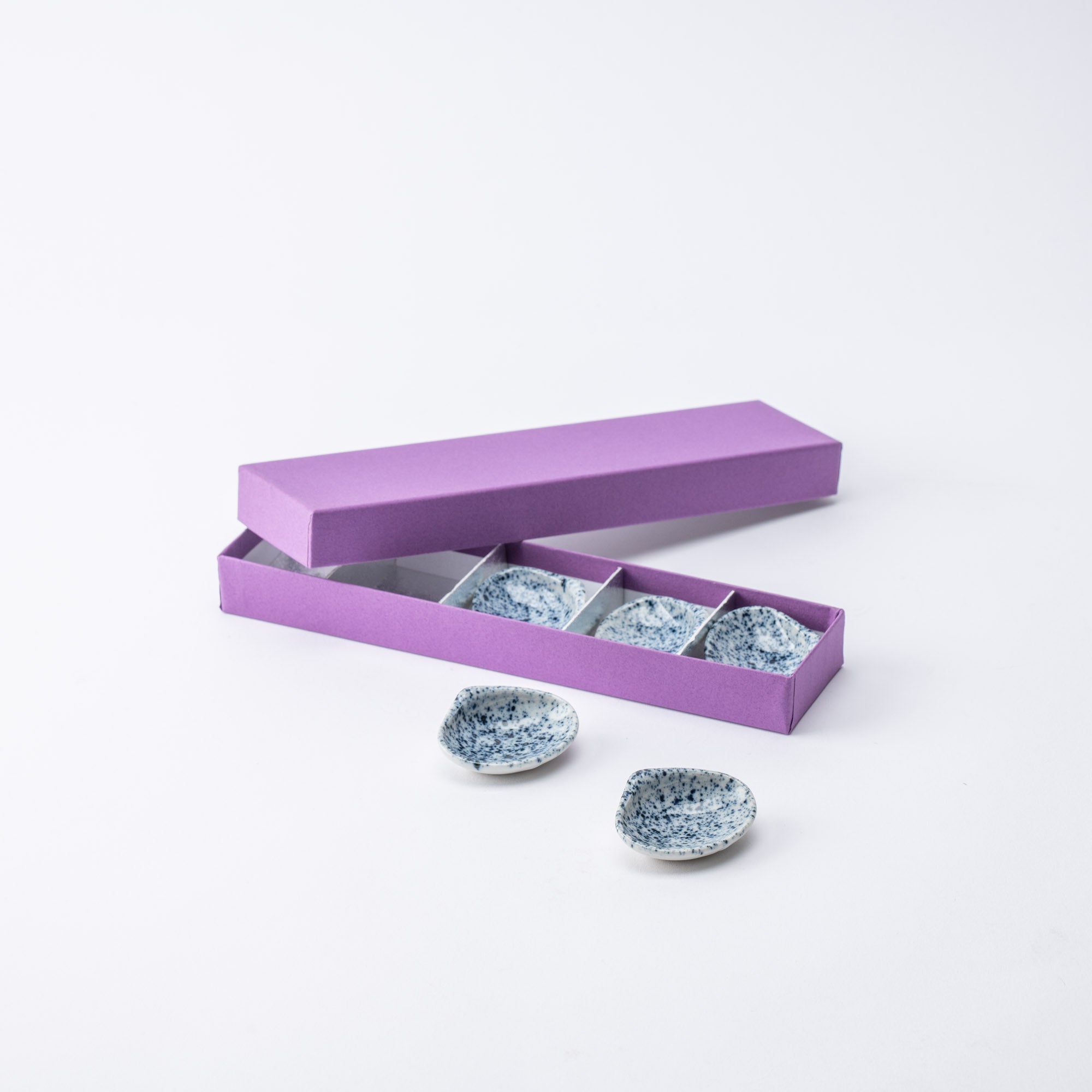
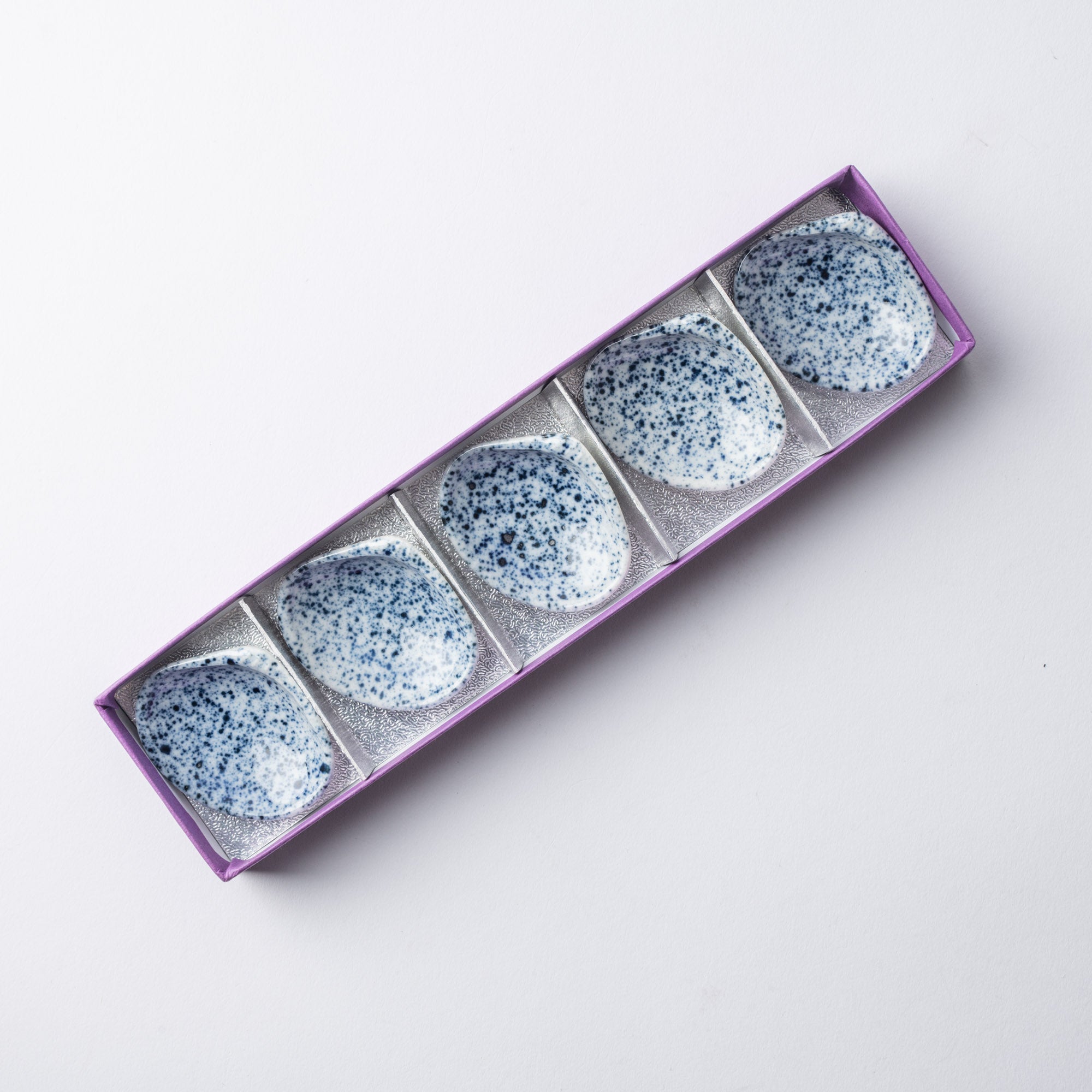
Ink-Sprayed Shell Chopstick Rest Set
Estimated Shipping Widget will be displayed here!
Adding ceramic chopstick rests shaped like shells to your table is a great way to bring a refreshing feel. These accessories have an authentic texture, which makes them seem like they were taken straight from nature.
This particular type of pattern is created through the method known as fukizumi (spraying ink). It involves using water-soluble paint or blue pigment called gosu, which is dispersed by running a stiff brush over a fine mesh strainer and applying it to the surface of the porcelain base. A technique such as this can often be seen on undergrazed porcelain pieces.
The classic design adds color to the dining scene, making this set a good choice as a first set of chopstick rests.
With their smooth surface, ceramic chopstick rests are the go-to material for daily use. Not only are they easy to keep clean, but they coordinate with a myriad of tableware.
DETAILS
| Quantity | 5 pcs |
| Size | L 5.3 cm (2 in) x W 4.3 cm (1.7 in) x H 2 cm (0.8 in) |
| Material | Stoneware |
| Package Type | Paper box |
| Microwave | No |
| Dishwasher | No |
Maker / Brand
Kyoto's Hozan Kiln primarily focuses on underglaze enameling techniques, especially using gosu, and excels in producing net-painted tableware and delicately painted chopstick rests adorned with seasonal motifs.
The history of Hozan Kiln dates back to 1951 when it was established as Kato Yukichi Seisakusho (Kato Yukichi Factory). It later changed its name to Hozan Kiln. The current owner, Kato Yoshitsugu, represents the third generation.
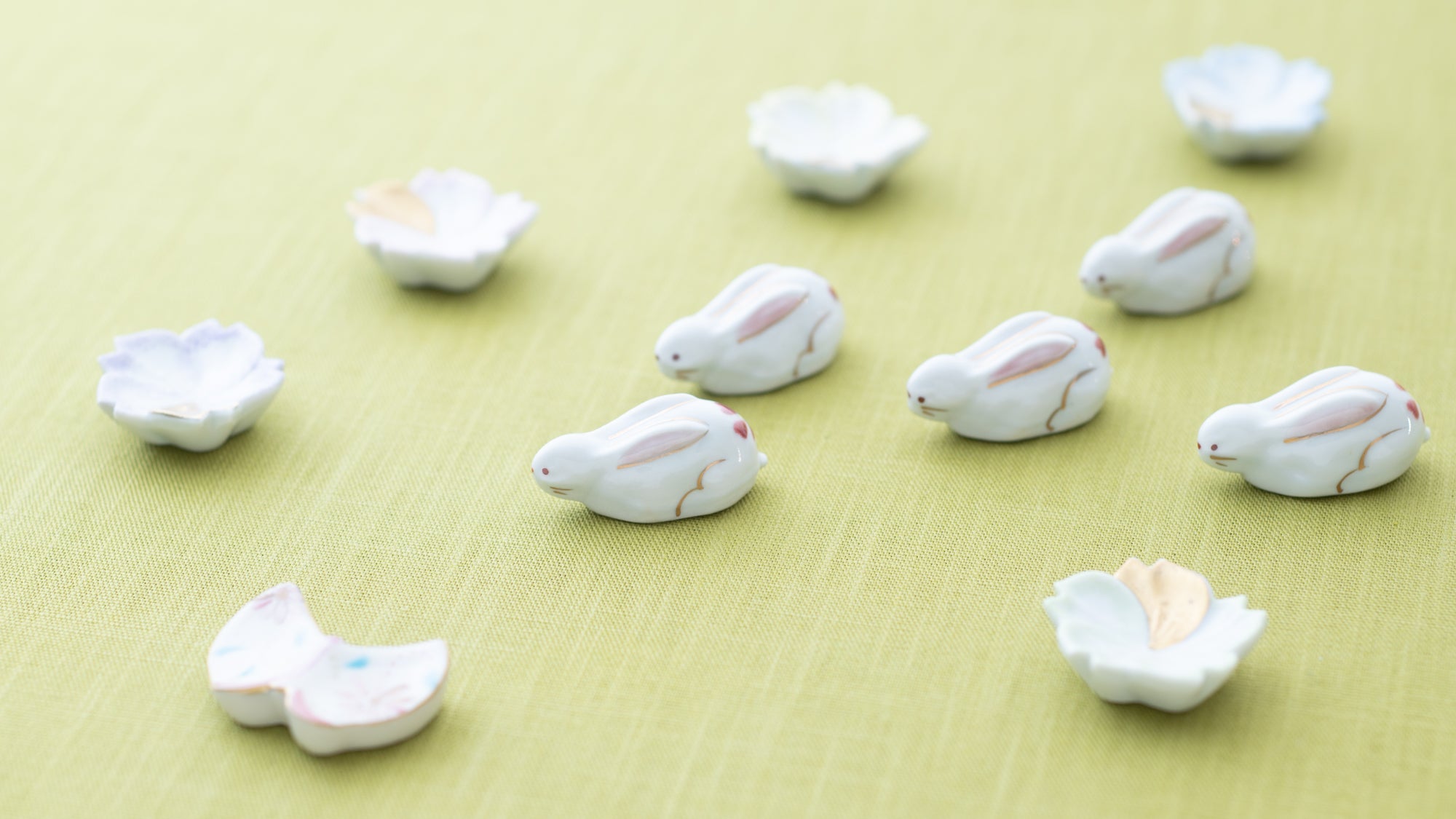
Crafts
Kyo ware and Kiyomizu ware, collectively known as Kyo-yaki and Kiyomizu-yaki, are celebrated pottery styles from Kyoto. Known for their vibrant designs, finely sculpted forms, and dedication to handcrafted detail, these wares reflect Kyoto’s distinctive sense of beauty and artistic refinement.
Defined by a long-cultivated diversity, Kyo ware and Kiyomizu ware have drawn on techniques and styles from pottery traditions across Japan, evolving into a richly expressive and distinctly Kyoto art form. Recognized as a Traditional Craft of Japan in 1977, they continue to be cherished for their cultural depth and everyday appeal.
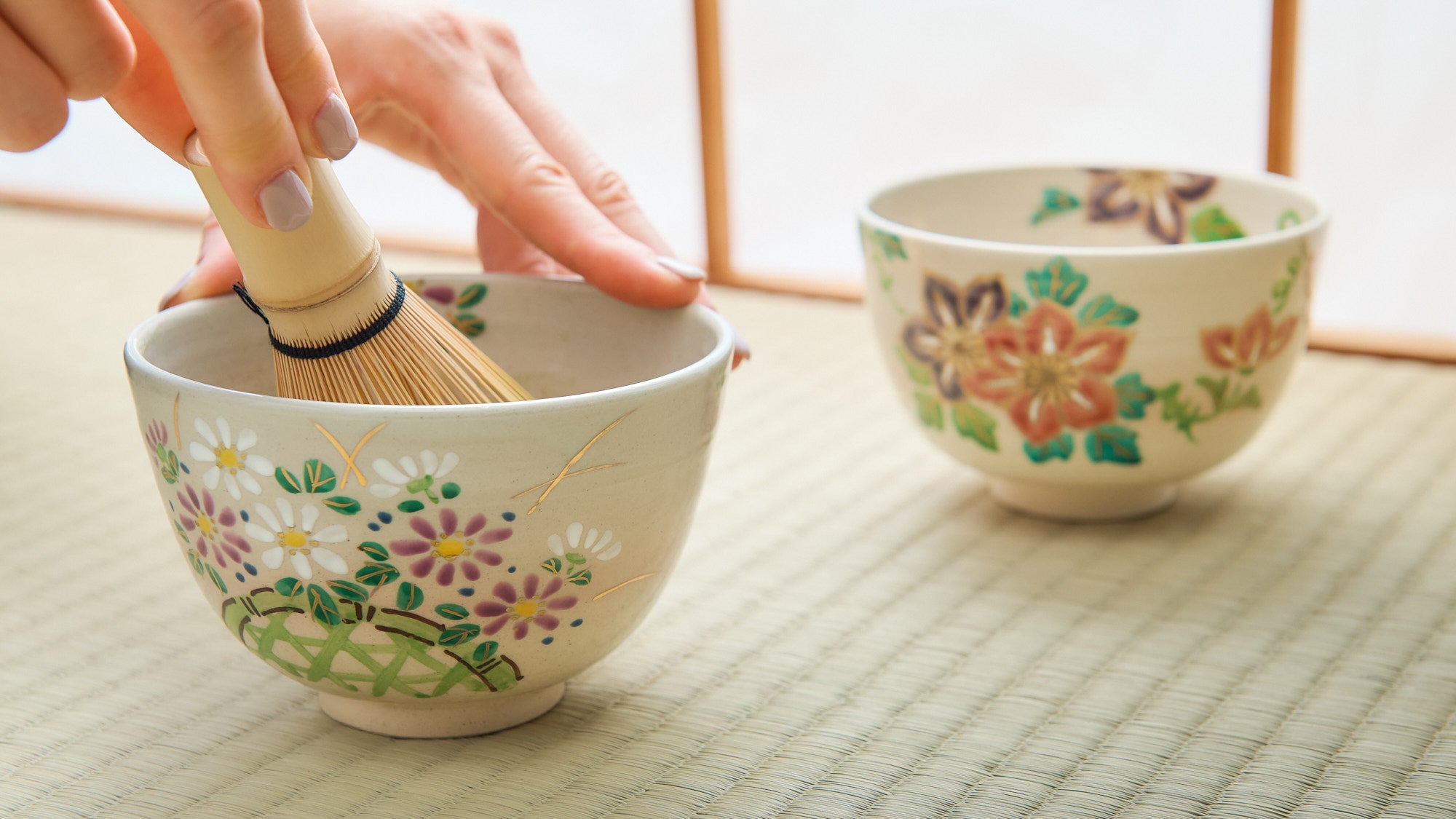
Choose options














Estimated Shipping Widget will be displayed here!
Chopstick Rests
Chopstick rests are the perfect way to enhance your table with a touch of Japanese style. A mix of everyday pieces and a few suited for special occasions keeps your table ready for any moment. We’ve selected handmade chopstick rests from across Japan to make your dining experience even more enjoyable. From playful shapes in porcelain to sleek metal designs, these small accents add distinct charm to any setting.
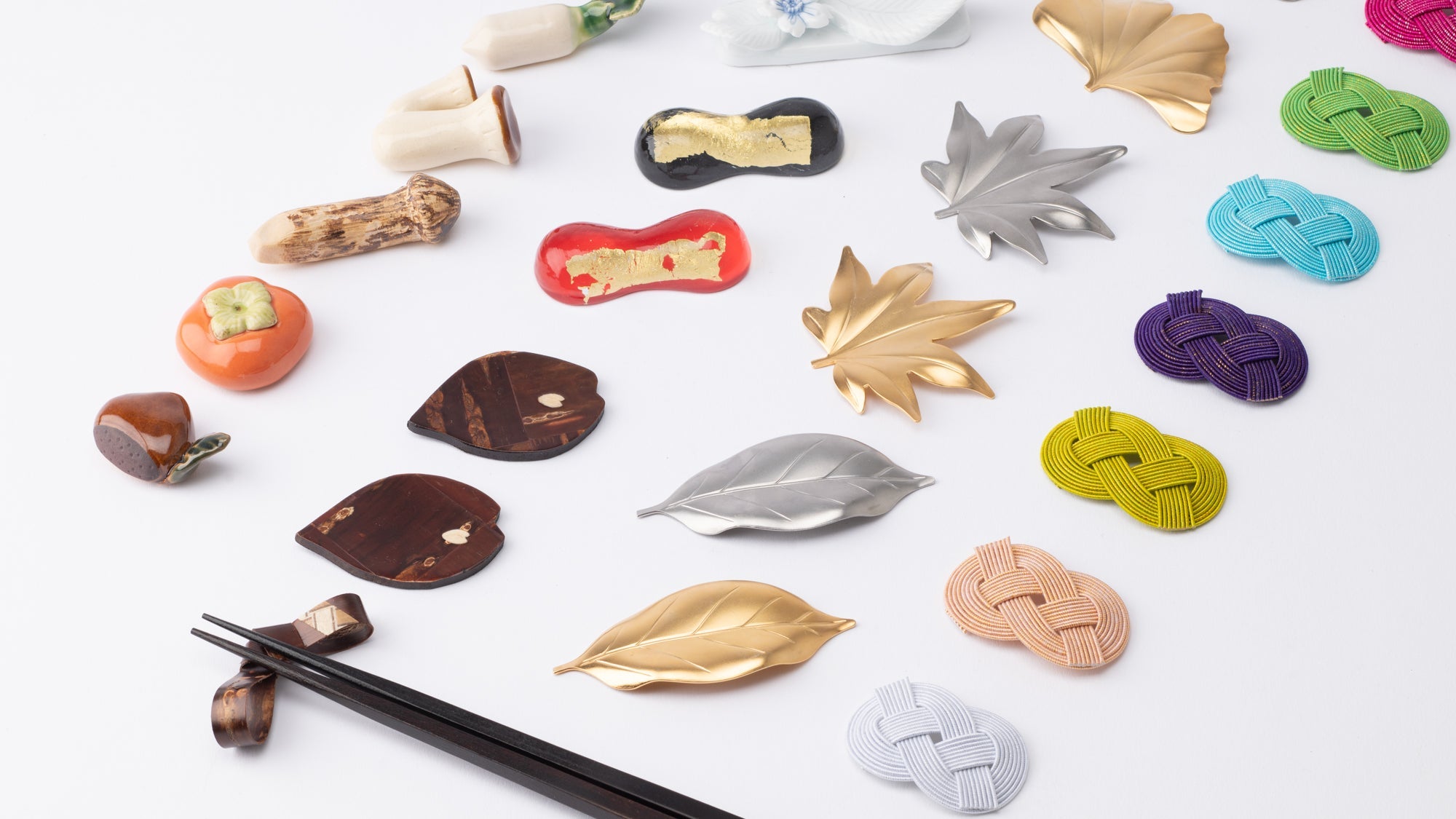
Cool Off With Shades of Blue
Bring Japanese hues into your space this summer with tableware and decor in shades of blue. Featuring minimalist geometric patterns, modern styles, and intricately painted designs, the items in this collection are sure to introduce a little extra zing to your late-summer table.
One of the most classic Japanese blues is cobalt: a rich, bold color that works as well as a statement piece as it does as a backdrop for food or a canvas for detail. You will often find cobalt blues contrasted with pure white, a timeless pairing known in Japanese as sometsuke. Another favorite is navy blue, a sophisticated color seen throughout Japanese art. Adding navy is a great way to ground a table. Last but not least is mizu-iro, literally “water blue,” a pale aqua that suggests the refreshing coolness of the ocean.
So, embrace the rich palette of blue and rejuvenate your final weeks of summer.
